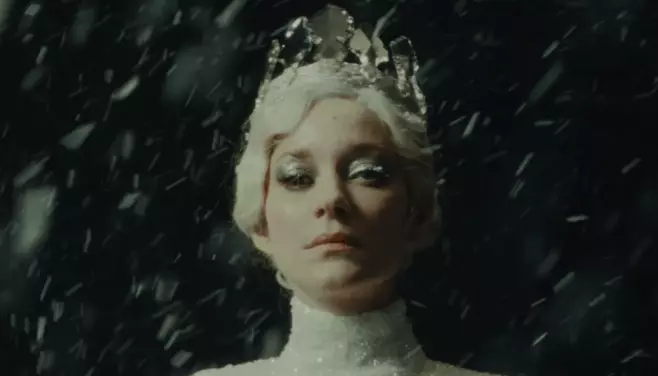Marion Cotillard, known for her remarkable performance as Edith Piaf in “La Vie en Rose,” continues to captivate audiences in her latest film, “The Ice Tower” (La Tour de Grace). During the Berlinale Film Festival, the Oscar-winning actress revealed her initial intimidation by young co-star Clara Pacini, which she described as a significant aspect of their collaboration. Cotillard’s admission sheds light on the dynamics of their professional relationship and the unique emotional landscape they navigated as they prepared for their roles. The mutual respect and connection forged between them before the filming highlights the importance of interaction and chemistry among actors, fundamentally contributing to the authenticity of their performances.
Cotillard’s portrayal of the enigmatic Cristina—a character deep-rooted in complexity and mystery—invites a rich exploration of psychological depth. In an intriguing twist, Cristina is an actress working on an adaptation of Hans Christian Andersen’s “The Snow Queen.” Cotillard noted that she had “invented stories, rivalries with actors” to delve into her character’s arc. This approach adds layers to the narrative, illustrating how the pressure of the film industry can lead to an internal struggle characterized by ambitious aspirations mingled with profound insecurities.
The actress’s statement about wanting to be surprised by unexpected reactions during shooting speaks to the unpredictable nature of acting itself. This willingness to embrace uncertainty allows for deeper emotional authenticity on screen. Actors, like Cotillard, often rely on interpersonal dynamics and context to explore their character’s nuance, resulting in a performance that resonates with audiences.
The film, directed by Lucile Hadžihalilović, offers a unique lens through which to view a world that parallels our own—blurring the lines between reality and illusion. Hadžihalilović’s adaptation communicates a contemporary relevance, where the conventional mirror of self-reflection is replaced by a camera, making a profound statement on modern life and the perils of an image-centric society. Cotillard expressed appreciation for this interpretative shift, stating it resonated deeply with her and added significant layers to the adaptation.
The 1970s setting serves not only as a backdrop but also enhances the film’s thematic richness. While drawing inspiration from a classic fairy tale, the film interrogates broader societal conditions, reinforcing that fairy tales often carry complex moral lessons masked under their whimsy. The filmmakers’ dedication to unpacking these themes resonates through the narrative and the character dynamics portrayed on screen.
One of the most challenging aspects for Cotillard was portraying an actress portraying another character—a narrative recursion that echoes the layers of self-perception and artistic representation. The reflective examination of images within images allows for a multitude of interpretations, further complicating the character’s journey and enriching the film’s narrative tapestry. This multi-layered storytelling invites the audience to engage actively, interpreting the relationships and dynamics presented.
Hadžihalilović’s vision, often intricate and dense with meaning, challenges the audience to navigate these layers as they become enmeshed in the characters’ lives. In effect, viewers are not merely spectators but active participants in deciphering the tangled web of human experiences depicted in the film.
As “The Ice Tower” prepares for its theatrical release in France in September 2025, the anticipation builds around the performances of Cotillard and her co-stars, including Clara Pacini, August Diehl, and Gaspar Noé. Their collaboration promises to deliver a captivating narrative that aligns personal struggles with universal themes. In exploring the intricacies of self and the performance arts, Cotillard’s depth in portraying Cristina exemplifies her continued growth as an actress who is not afraid to confront her vulnerabilities—a lesson that will surely resonate with audiences across the globe. The film emerges not merely as a reinterpretation of a fairy tale but as a profound exploration of identity, artistry, and the enigmatic nature of human connection.

